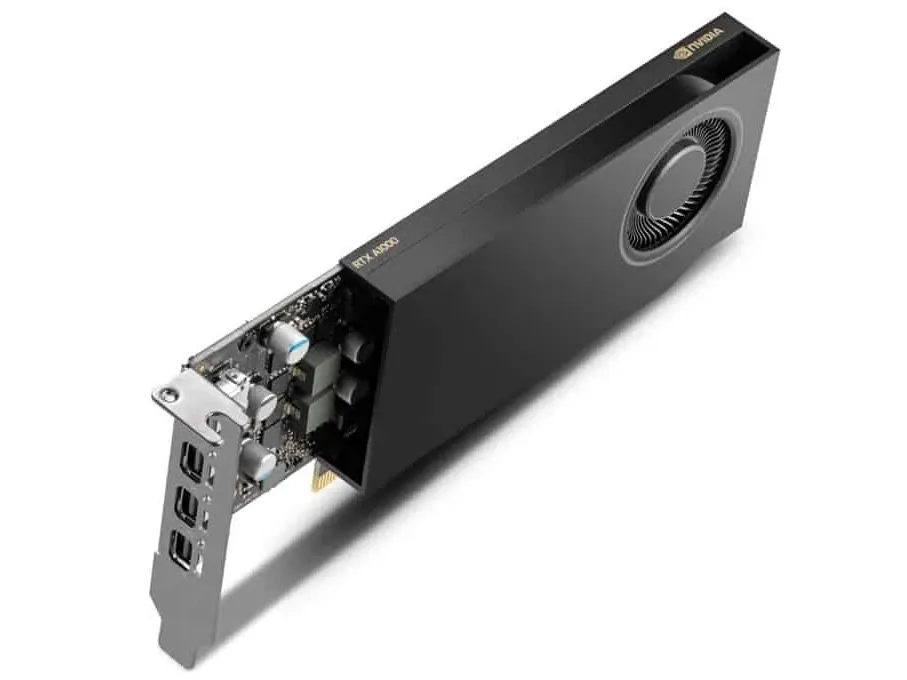These new models are positioned to replace the T1000 and T400 GPUs launched in 2021, which were among the last NVIDIA professional GPUs not to carry the RTX branding. The RTX A1000 notably offers a significant performance boost, providing more than triple the generative AI processing speed of its predecessors. Additionally, its RT Core enhances the efficiency of applications in CAD, video editing, and other professional areas.
The specifications for the RTX A400 and RTX A1000 are as follows:
- RTX A1000: 2304 CUDA cores, 72 third-generation Tensor Cores, 18 second-generation RT Cores, a boost clock of 1460 MHz, 8GB of 12Gbps GDDR6 memory across a 128-bit interface, along with 2 NVDEC decoders and 1 NVENC encoder.
- RTX A400: 768 CUDA cores, 24 third-generation Tensor Cores, 6 second-generation RT Cores, a boost clock of 1755 MHz, 4GB of 12Gbps GDDR6 memory across a 64-bit interface, with 1 NVDEC decoder and 1 NVENC encoder.
The RTX A1000 is already available through NVIDIA’s global distribution network, while the RTX A400 is expected to hit the market in May, with broader availability from manufacturers by the summer.


